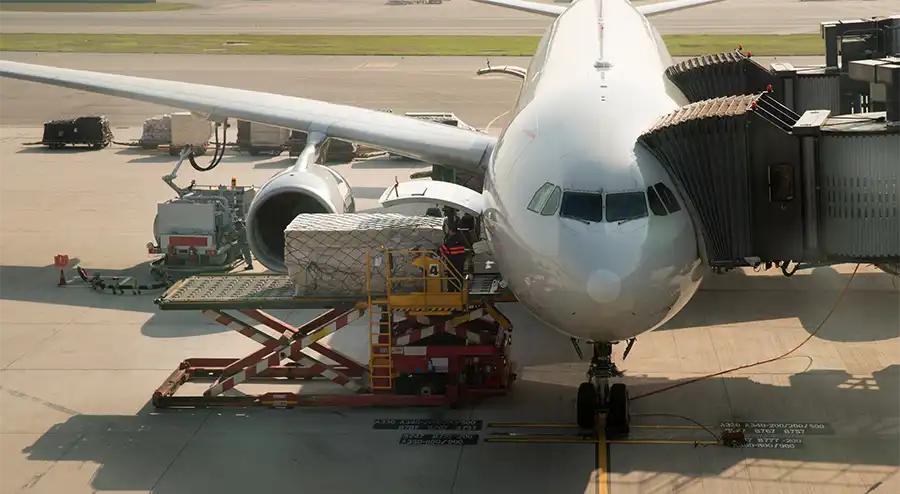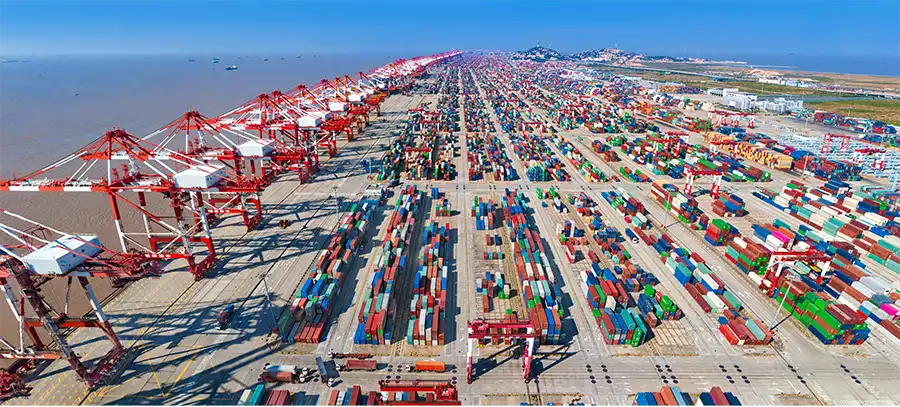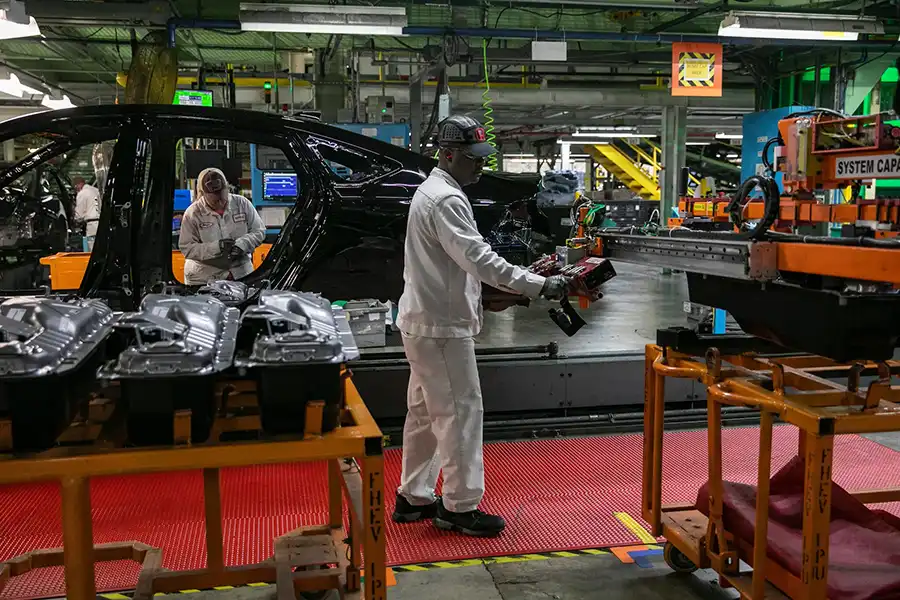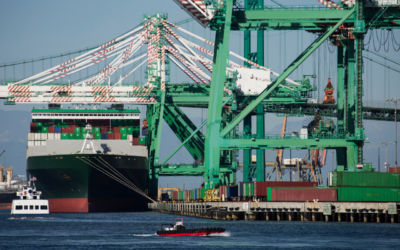1. Navigating the Waters of Change: Unveiling the Future of Maritime Labor in ILWU-PMA Contract Talks

The International Longshore and Warehouse Union (ILWU) and the Pacific Maritime Association (PMA) have been negotiating a new contract for over a year. The ILWU represents labor workers in California, Oregon, and Washington, while the PMA represents marine terminals and shipping lines on the US West Coast. Talks have stalled on several key issues, including the union’s demands for increased manning on equipment at conventional container terminals in Southern California. Other sticking points include automation, wages, retirement benefits, and stringent environmental regulations. Both parties have refrained from publicly discussing the details of the tentative agreements made to date, and disruptions to cargo handling have been reported in recent weeks.
Despite the significant progress achieved in the negotiations, the ILWU and PMA remain at odds over several key issues. The latest development is a proposed meeting on May 1, 2023, to discuss the manning requirements at the ports of Los Angeles and Long Beach, which could be a major breakthrough towards a new coastwide contract. However, it could take another two to three months for the agreement to be ratified by the ILWU membership, and until then, US retailers and freight forwarders are likely to continue diverting discretionary cargo away from the West Coast. The ongoing negotiations will continue to affect the flow of cargo and create uncertainty for businesses, highlighting the importance of a robust and stable supply chain.
As industry experts, we recognize the criticality of a reliable and efficient supply chain. Our team is actively monitoring the situation, and we are here to assist and provide guidance amidst these challenges. Should you require support in navigating the evolving landscape, please do not hesitate to reach out to us.
Above is our summary that captures the highlights in order to save you time, but you can read the full articles on JOC and Supply Chain Dive
2. Embracing Innovation: How the Air Cargo Industry is Adapting to New Challenges

The global air cargo industry is facing significant challenges due to a decline in economic growth and a decrease in demand. As the industry grapples with these macroeconomic factors, leaders are emphasizing the need for innovation and experimentation to navigate the changing landscape. Air cargo professionals have already showcased their creative problem-solving skills, particularly during the COVID-19 pandemic, by adapting quickly to new challenges and coordinating with stakeholders.
To address the current challenges, industry leaders emphasize the importance of understanding and leveraging data. By harnessing the power of data analytics and adopting user-friendly tools, such as cloud-based platforms and business insight techniques, air cargo companies can gain valuable insights and respond promptly to market dynamics. Additionally, integrating technology into air logistics, such as through cargo booking platforms and real-time tracking systems, has proven instrumental in managing the extreme volatility of the industry.
While digital tools and technology advancements are crucial, it is equally essential for industry leaders to make sound decisions and exhibit flexibility in their approach. The ability to innovate, experiment, and collaborate with stakeholders will be key to driving the industry forward. Moreover, the industry must focus on globalization, digitalization, and sustainability to adapt to the ever-changing market conditions.
Above is our summary that captures the highlights in order to save you time, but you can read the full article on The STAT Trade Times
3. Mexican Airports Defy the Odds: Cargo Volumes Surge Amid Global Decline

Mexican airports are experiencing growing cargo volumes, with throughput climbing by 5.2% in the first two months of 2023 compared to the same period in 2022. While domestic volumes increased by 1%, international traffic rose by 7.3%. Benito Juarez Airport in Mexico City, which suffers from chronic congestion, has led the charge, with domestic volumes rising by 7.4% and international traffic surging by 13.6%.
The growth in cargo volume is partly due to the establishment of manufacturing capacity as companies look to near-shore production, a trend that has been accelerated by the pandemic. The growth is also due to continuous re-shifting by forwarders using the US as a bridge to and from Mexico. The nearshoring trend has attracted many industries, such as aerospace, pharma, and automotive, to Mexico, making it an attractive destination for airlines.
Lufthansa Cargo is one such airline that has seen strong demand, performing on previous year levels with a strong import and export demand. The airline plans to resume passenger flights between the Mexican capital and Munich in June with three weekly frequencies. The directional flows of the growth are close to balance, with faster growth southbound at this point as manufacturers set up production capacity in Mexico.
Above is our summary that captures the highlights in order to save you time, but you can read the full article on The Load Star
4. Resilient Recovery: U.S. Imports Rebound in March Amidst Declining China Cargo

Despite a decline in cargo flows from China, U.S. imports experienced a rebound in March, signaling signs of recovery. According to data released by Descartes, U.S. imports totaled 1,853,705 twenty-foot equivalent units (TEUs) in March, marking a 6.9% increase from February and a 4.2% increase from March 2019. Los Angeles and Long Beach emerged as the top performers, with imports rising by 30% and 25%, respectively, rebounding from the Lunar New Year disruptions in February. However, the East Coast witnessed month-on-month drops, with ports like Savannah, New York, New Jersey, and Charleston experiencing declines. The National Retail Federation (NRF) predicts continued growth in U.S. imports, although not at the levels seen during the pandemic.
Wholesale inventories still pose a challenge to the predicted rebound. Census Bureau data revealed high inventory-to-sales ratios in various categories, including hardware, plumbing, heating equipment, household appliances, electrical and electronic goods, and wholesale apparel and accessories. These ratios indicate an inventory overhang and limited progress in reducing excess inventory. While port congestion has cleared and supply chain conditions appear to be normalizing, the Global Supply Chain Pressure Index (GSCPI) methodology has faced criticism, suggesting that the supply chain has not fully returned to normal.
Above is our summary that captures the highlights in order to save you time, but you can read the full article on FreightWaves
5. Powering Ohio’s Future: Electric Cars Reshape Jobs and Companies in the Heart of the Auto Industry

Ohio, a state with a rich automotive heritage, is taking a proactive approach to embrace the rise of electric vehicles (EVs) and position itself as a leader in the industry. With major investments exceeding $50 billion from top automakers like General Motors (GM) and Ford, Ohio is becoming a hub for EV manufacturing and battery production, creating a wave of new opportunities for workers and businesses in the state.
One shining example is the story of Erick Belmer, an industrial mechanic who experienced the closure of a GM plant in Lordstown. Despite the challenges, Belmer remains excited as GM converts factories in Ohio to produce electric motors, symbolizing a transformative shift in manufacturing regions and job prospects. With its skilled workforce and strong manufacturing infrastructure, Ohio is well-equipped to embrace this transition and capitalize on the growing demand for electric vehicles.
This transition to EVs not only brings environmental benefits but also has the potential to revitalize communities and create high-quality jobs in Ohio. The investments by automakers like GM, Jeep, and Honda and their commitment to retraining workers for EV production demonstrate the state’s determination to ensure a smooth and prosperous transition. Ohio is poised to become a thriving center for electric vehicle manufacturing, attracting further investments and driving economic growth.
Let us be your trusted logistics partner in Ohio’s electric vehicle revolution!
Contact us today to discover how we can streamline your EV logistics, enhance your supply chain, and propel your business forward. Together, we’ll drive progress and embrace the opportunities of the electrified future.
Above is our summary that captures the highlights in order to save you time, but you can read the full article on The New York Times


